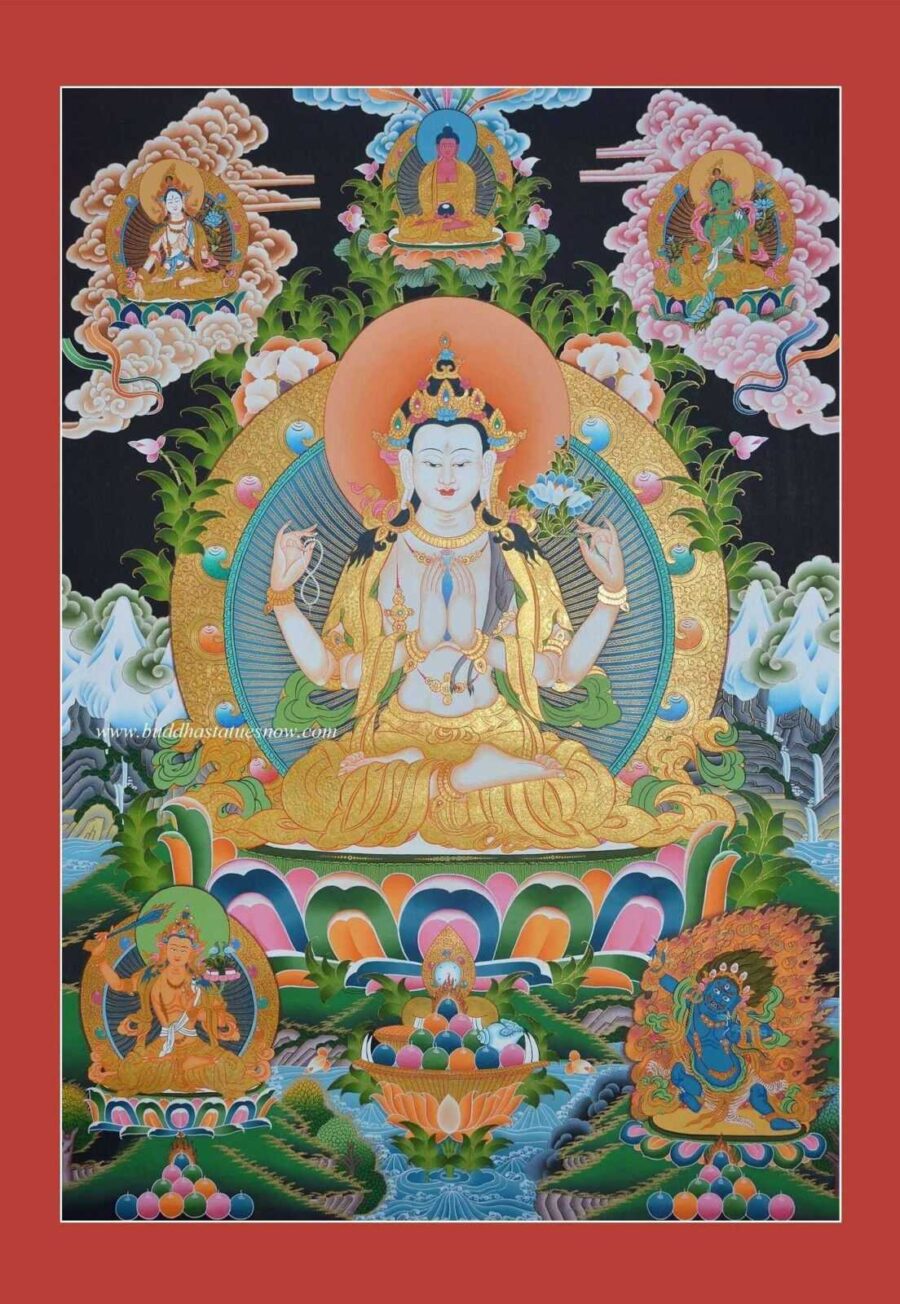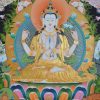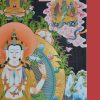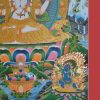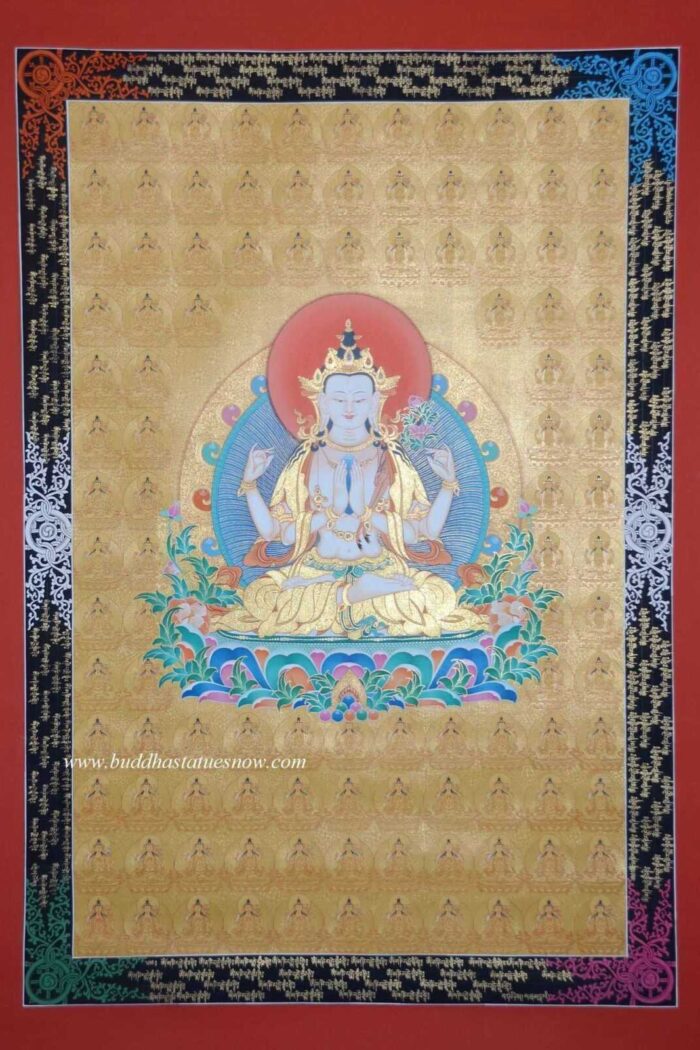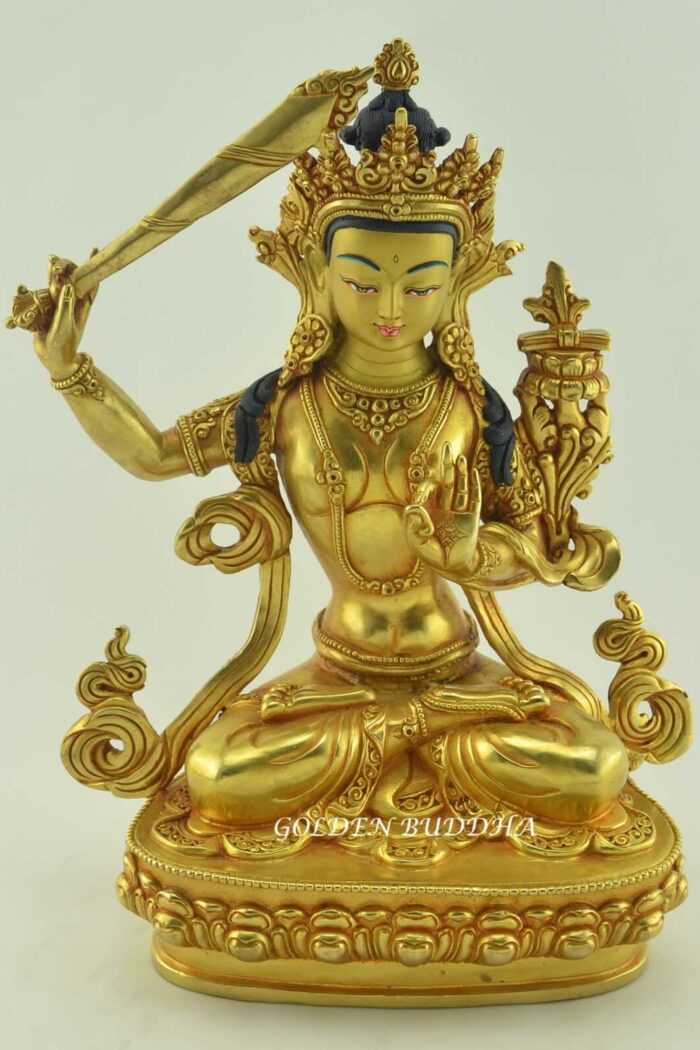Tibetan Avalokiteshvara is how Tibetan Buddhists perceive the bodhisattva of compassion. Our Tibetan Avalokiteshvara thangka is richly symbolic. Each of the deity’s four arms represents one of the four immeasurables – compassion, loving kindness, equanimity and appreciative joy. Additionally, the uptala flower (blue lotus) is held in his upper left hand. The lotus is very symbolic in Buddhism serving as an important metaphor for enlightenment. As the lotus flower rises above the murky pond water, so can devotees rise above the sea of suffering.
Additionally, Tibetan Avalokiteshvara holds the crystal mala beads in his upper right hand because he is constantly reciting his mantra – “Om Mani Padme Hum”. This means “hail to the jewel of the lotus” and it will bring his faithful devotees many blessings.
Another aspect of this Tibetan Avalokiteshvara thangka is the “cintamani jewel”. This special wish granting gem is clasped between his hands in front of his heart. It is believed that it has the power to grant the faithful followers of Tibetan Avalokiteshvara their best wishes.
The Tibetan Avalokiteshvara thangka also includes other deities who are in close affiliation with Avalokiteshvara. Please observe Amitabha Buddha, Green Tara and and White Tara painted in the top part of the thangka. Additionally, Vajrapani and Manjushri can be seen below Avalokiteshvara. Click here to learn more about the bodhisattva of compassion.


